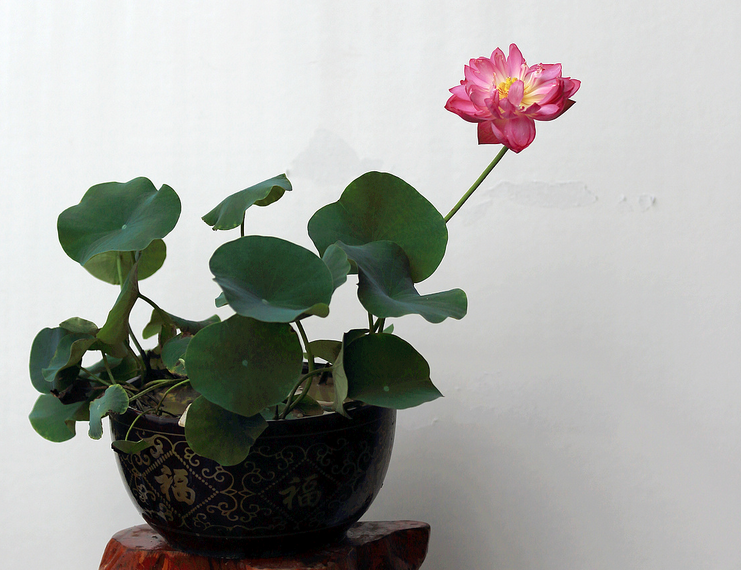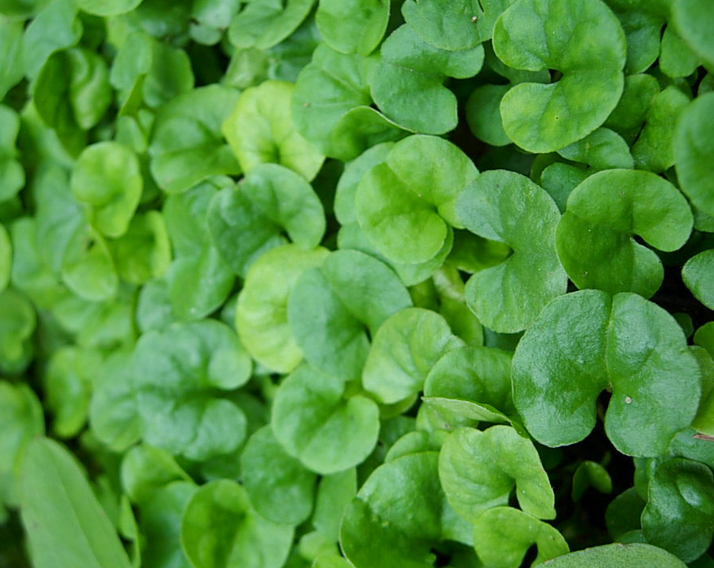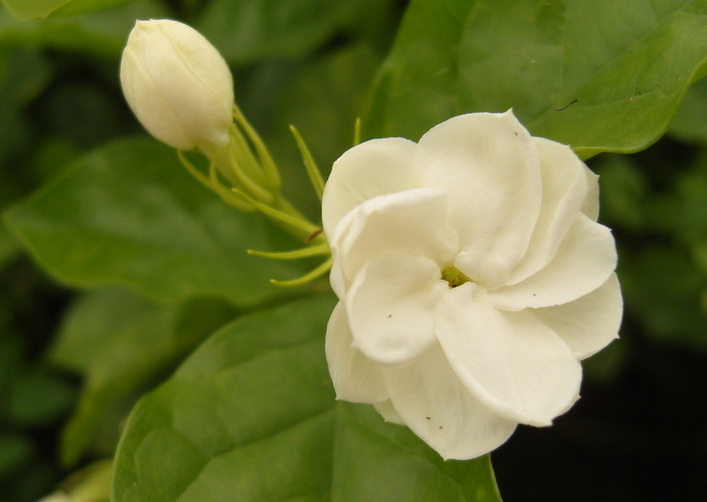Potted lotus cultivation method
Lotus, also known as lotus, water hibiscus, etc., belongs to the sleeping lotus order, many people want to raise their own lotus. So what should be done when raising potted lotus? Are there any methods, tricks and tricks? Next, let's learn more about it with the editor of the decoration network.

Potted lotus culture methods are widely released.
Culture methods of potted lotus
Lotus likes warmth and sunshine, avoid yin and bitter water, but like stable still water. Avoid dry, avoid deep water, hate the flowing water with great disparity in fluctuation. Suitable for humus-rich and slightly sticky soil, do not like loose sandy soil. Afraid of the cold, branches and leaves withered in autumn and winter, but the underground stem (lotus root) can survive the winter without freezing water. Generally 8-10 ℃ germination, 14 ℃ lotus root growth, high temperature flowering, 25 ℃ growth of new lotus root.
1. Soil quality: Lotus requires fertile clay loam rich in humus. Excessive clayey soil affects the elongation of lotus root and the expansion of lotus root; easy soil is vulnerable to wind damage and hinders root development, which is not conducive to the growth of lotus. The soil is usually lake and pond mud, and it can also be mixed with 4 parts of garden soil, 3 parts of loess and 3 parts of sand. PH6.5~7.5 is the best soil.
2. Lighting: the lotus likes strong light and receives 7-8 hours of light every day, which can make its buds more, flowers bloom continuously, do not cultivate in shade, and indoor viewing can not exceed the same day when seeing flowers. The lotus is raised in the family pot. Be sure to put it on the balcony or in the courtyard and move to a shady place at noon to avoid the scorching sun.
3. Temperature: Lotus is very strict on temperature, generally 8: 10 ℃ begins to sprout, 14 ℃ lotus root begins to elongate, 25-30 ℃ is the most suitable temperature for lotus growth and development, especially in rainy and sunny weather is more conducive to plant growth.
4. Fertilization: the lotus is cultivated in the pot, and the chicken manure in the range of 200 to 500g is applied as the base fertilizer according to the size of the pot. the lotus cultivated with this fertilizer is better than pig manure, cow manure and human manure as the base fertilizer. One month after planting, you can put rotten bean cake water or human feces and urine-based liquid fertilizer at a concentration of 10%. After the standing leaves were produced, they were topdressing for 1 or 2 times, and superphosphoric acid was applied every 7 days during flowering.
5. Moisture: the temperature is high in summer, the lotus is easy to lose water. Therefore, the pot should add water once every two days, and the pot should add water once or twice a day, which should be roughly the same as the water temperature in the pot, and keep the water clean. If the water is found to be dirty, change the water. At the end of autumn and the beginning of winter, the lotus enters the dormant period, it is not necessary to add water frequently, only shallow water can be kept in the cylinder basin.
6. Diseases and insect pests: the common lotus pests are aphids on floating leaves or small standing leaves and Spodoptera litura from July to August. It can be sprayed with 50% dimethoate emulsion 1500-2000 times or 2.5% fish rattan essence 500 times.
Potted lotus blossoms in summer and is eye-catching. People stop growing after autumn, and the branches and leaves on the surface of the water gradually wither. Before "the Beginning of Winter", cut off the residual branches, remove sundries from the basin, pour out the water from the tank, and move them into an indoor storage room of about 5 ℃ for the winter. Just keep the soil moist. After the Qingming Festival in the following year, it will be moved out of the house and replanted after replanting.
How to grow potted lotus culture methods of potted lotus
Lotus has always been a very popular flower plant, in the writings of scholars and poets, there are too many beautiful poems. In the past, lotus flowers were planted in large areas of water, such as ponds and small lakes, but now we can plant them in pots and bring them to our homes. Next, let the editor introduce the cultivation method of potted lotus to you.
Brief introduction of Lotus:
Lotus, also known as lotus, water hibiscus, etc., belongs to the order Nelumbo nucifera, lotus family perennial aquatic herbaceous flowers. The underground stem is long and thick, with long nodes, that is, I often say lotus root, leaf shield round, florescence from June to September. There are many kinds of lotus, which can be divided into two categories: ornamental and edible, lotus all over the body, lotus root and lotus seed can be eaten, lotus seed, rhizome, lotus root node, lotus leaf, flower and seed germ can be used as medicine.
Growth habits of lotus:
Lotus is native to tropical and temperate regions of Asia and is an aquatic plant. It is suitable for calm shallow water, lakes, marshes and ponds where it is relatively stable. The lotus is very sensitive to water loss. The lotus leaves planted in the water tank will wither as long as they are not irrigated for 3 hours in summer. if the water stops for one day, the lotus leaves will scorch and the buds will wither. The lotus also likes light very much and needs full light during its growth period. The lotus is extremely intolerant to shade and will show a strong phototaxis when it grows in the semi-shade.
How to grow potted lotus:
Lotus likes warmth and sunshine, avoid yin and bitter water, but like stable still water. Avoid dry, avoid deep water, hate the flowing water with great disparity in fluctuation. Suitable for humus-rich and slightly sticky soil, do not like loose sandy soil. Afraid of the cold, branches and leaves withered in autumn and winter, but the underground stem (lotus root) can survive the winter without freezing water. Generally 8-10 ℃ germination, 14 ℃ lotus root growth, high temperature flowering, 25 ℃ growth of new lotus root.
Culture methods of potted lotus:
1. Soil quality: Lotus requires fertile clay loam rich in humus. Excessive clayey soil affects the elongation of lotus root and the expansion of lotus root; easy soil is vulnerable to wind damage and hinders root development, which is not conducive to the growth of lotus. The soil is usually lake and pond mud, and it can also be mixed with 4 parts of garden soil, 3 parts of loess and 3 parts of sand. PH6.5~7.5 is the best soil.
2. Lighting: the lotus likes strong light and receives 7-8 hours of light every day, which can make its buds more, flowers bloom continuously, do not cultivate in shade, and indoor viewing can not exceed the same day when seeing flowers. The lotus is raised in the family pot. Be sure to put it on the balcony or in the courtyard and move to a shady place at noon to avoid the scorching sun.
3. Temperature: the lotus is very strict on the degree of depression, generally 8: 10 ℃ begins to sprout, 14 ℃ lotus root begins to elongate, 25: 30 ℃ is the most suitable temperature for lotus growth and development, especially in rainy and sunny weather is more conducive to plant growth.
4. Fertilization: the lotus is cultivated in the pot, and the chicken manure in the range of 200 to 500g is applied as the base fertilizer according to the size of the pot. the lotus cultivated with this fertilizer is better than pig manure, cow manure and human manure as the base fertilizer. One month after planting, you can put rotten bean cake water or human feces and urine-based liquid fertilizer at a concentration of 10%. After the standing leaves were produced, they were topdressing for 1 or 2 times, and superphosphoric acid was applied every 7 days during flowering.
5. Moisture: the lotus is easy to lose water when the temperature is high in summer. Therefore, the pot should add water once every two days, and the pot should add water once or twice a day, which should be roughly the same as the water temperature in the pot, and keep the water clean. If the water is found to be dirty, change the water. At the end of autumn and the beginning of winter, the lotus enters the dormant period, it is not necessary to add water frequently, only shallow water can be kept in the cylinder basin.
6. Diseases and insect pests: the common lotus pests are aphids on floating leaves or small standing leaves and Spodoptera litura from July to August. It can be sprayed with 50% dimethoate emulsion 1500-2000 times or 2.5% fish rattan essence 500 times.
The above is the specific introduction of the cultivation methods of potted lotus, through the above content, we should know how to grow potted lotus. I hope the above content will be helpful to you to cultivate lotus, and I also hope that you can grow more beautiful lotus.
How to cultivate potted lotus? introduction to breeding skills of potted lotus
Introduction: Lotus leaf Hetian, we all know that in the hot summer season, the lotus in the pond is particularly luxuriant. Raising lotus in a potted plant is a feeling closer to life. How to cultivate potted lotus? The following editor will introduce the techniques of potted lotus culture. Lotus requires fertile clay loam rich in humus. Excessive clayey soil affects the elongation of lotus root and the expansion of lotus root. The relaxed soil is vulnerable to wind damage and hinders root development, which is not conducive to the growth of lotus. The soil is usually lake and pond mud, and it can also be mixed with 4 parts of garden soil, 3 parts of loess and 3 parts of sand. PH6.5~7.5 is the best soil. In the pot or pot where the lotus is planted, first put the Hutang mud of 3xuan5, then mix it with a small amount of water to make a thin mud, and then cut three sections into plants to keep the terminal bud, waist bud and tail bud intact. Generally, it is advisable to plant two kinds of lotus root in each jar or pot. It is not necessary to add water to the pot 3-5 days after planting, and only add a small amount of water when the mud surface is cracked, so that the seed lotus root is fastened in the mud to facilitate germination. With the emergence of floating leaves and the rise of temperature, the vertical leaves grow and gradually add water to the tank and basin to the mouth of the basin. Lotus likes strong light and receives 7-8 hours of light every day. Can make its buds bloom continuously, do not cultivate in the shade. You can't watch it indoors for more than three days when you see the flowers. Lotus open-air display is appropriate, the family pot lotus, must be placed on the balcony or in the courtyard. The lotus is cultivated in the pot, and the chicken manure in the range of 200g-500g is applied as tomb fertilizer according to the size of the pot. the lotus cultivated with this fertilizer has more flowers, colorful colors and higher lotus seed yield than the lotus cultivated with pig manure, cow manure and human manure as basic fertilizer. This is the end of the introduction to the culture technology of potted lotus. I hope you will need it.
- Prev

Planting method of Dichondra repens value of Dichondra repens
Dichondra przewalskii has green leaves, low plants, dense and beautiful leaves, and is deeply loved by people. The editor of the decoration network reminds you that when planting Dichondra, you must first master some relevant knowledge. let's learn more about it with the editor.
- Next

Culture methods and matters needing attention of Jasmine Flower
The jasmine is fresh and elegant, and the flowers are beautiful, which can be used not only to watch but also to make tea. many people want to raise jasmine on their own, so what should they do when raising jasmine? Are there any methods and precautions? Next, let's learn more about it with the editor of the decoration network.
Related
- Fuxing push coffee new agricultural production and marketing class: lack of small-scale processing plants
- Jujube rice field leisure farm deep ploughing Yilan for five years to create a space for organic food and play
- Nongyu Farm-A trial of organic papaya for brave women with advanced technology
- Four points for attention in the prevention and control of diseases and insect pests of edible fungi
- How to add nutrient solution to Edible Fungi
- Is there any good way to control edible fungus mites?
- Open Inoculation Technology of Edible Fungi
- Is there any clever way to use fertilizer for edible fungus in winter?
- What agents are used to kill the pathogens of edible fungi in the mushroom shed?
- Rapid drying of Edible Fungi

